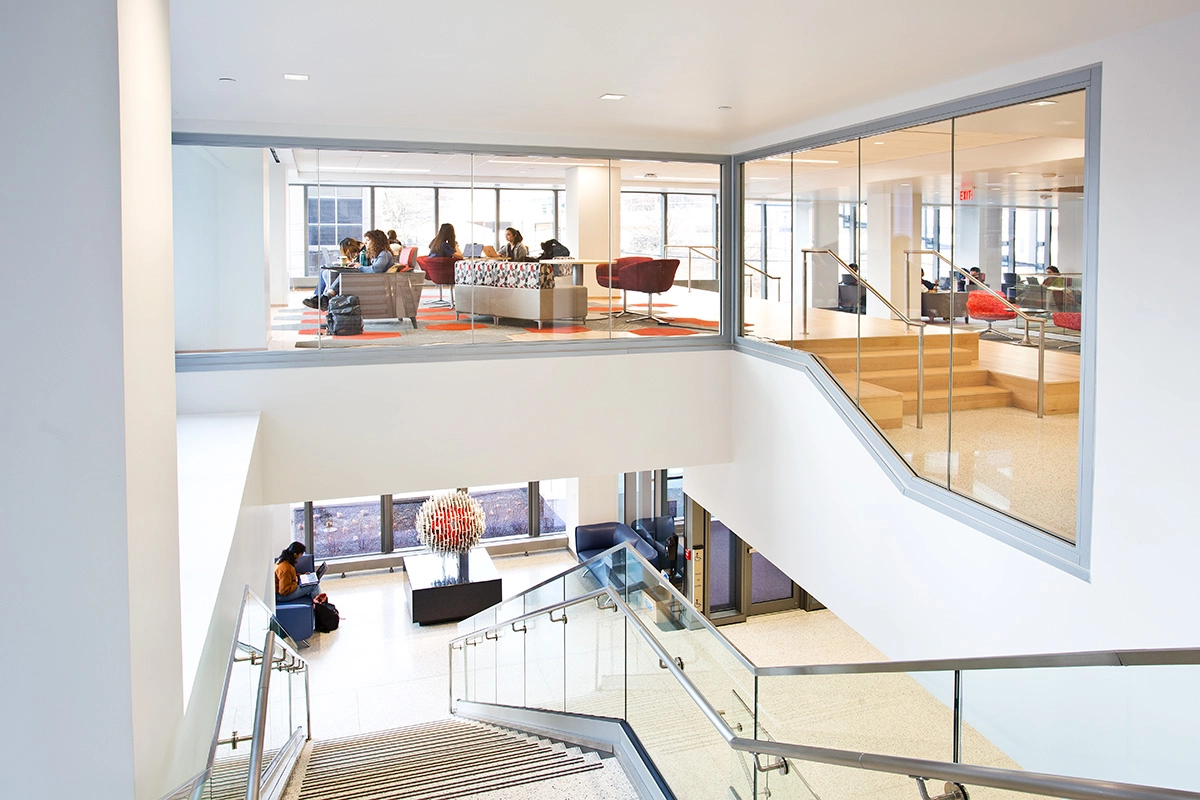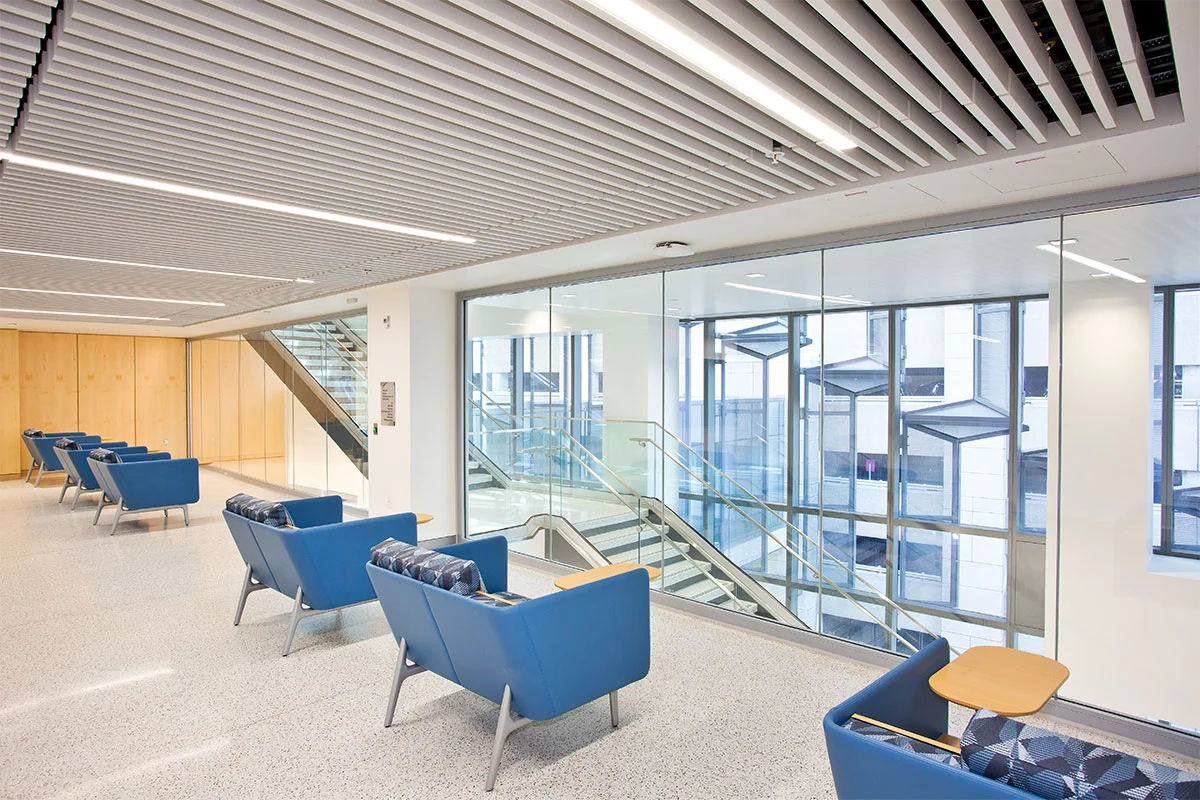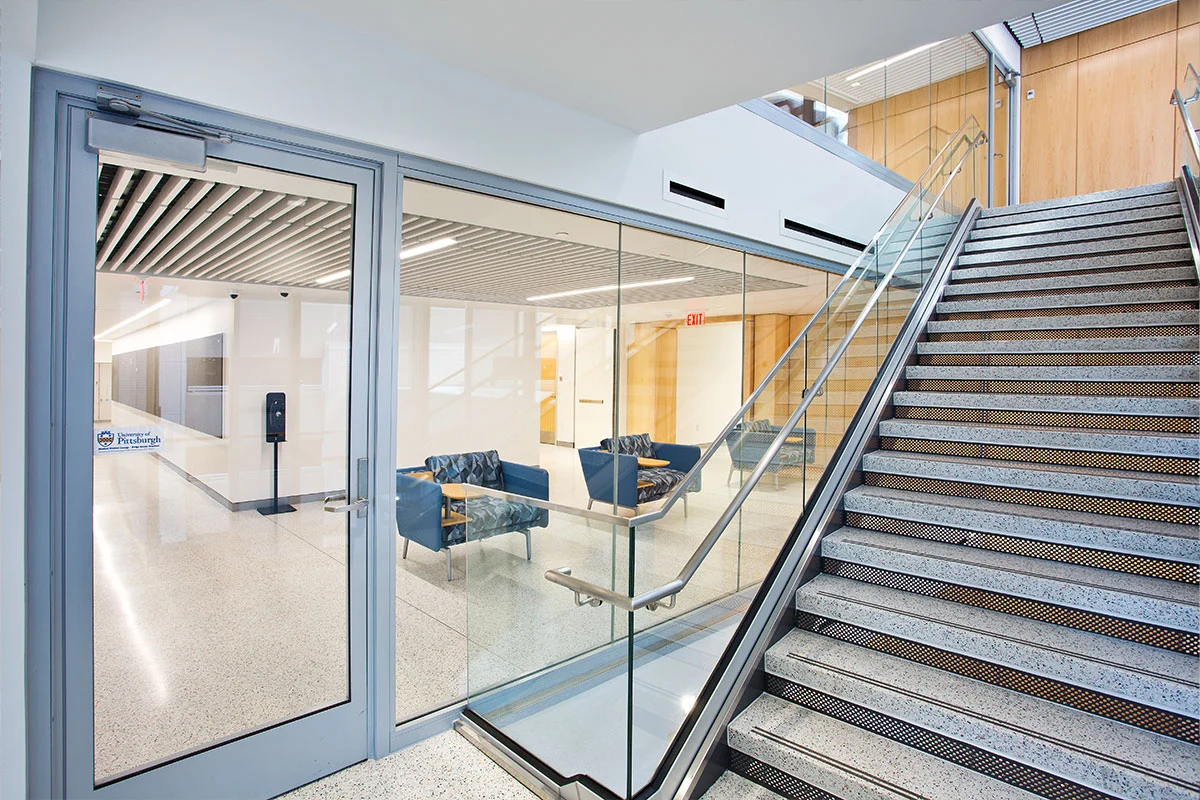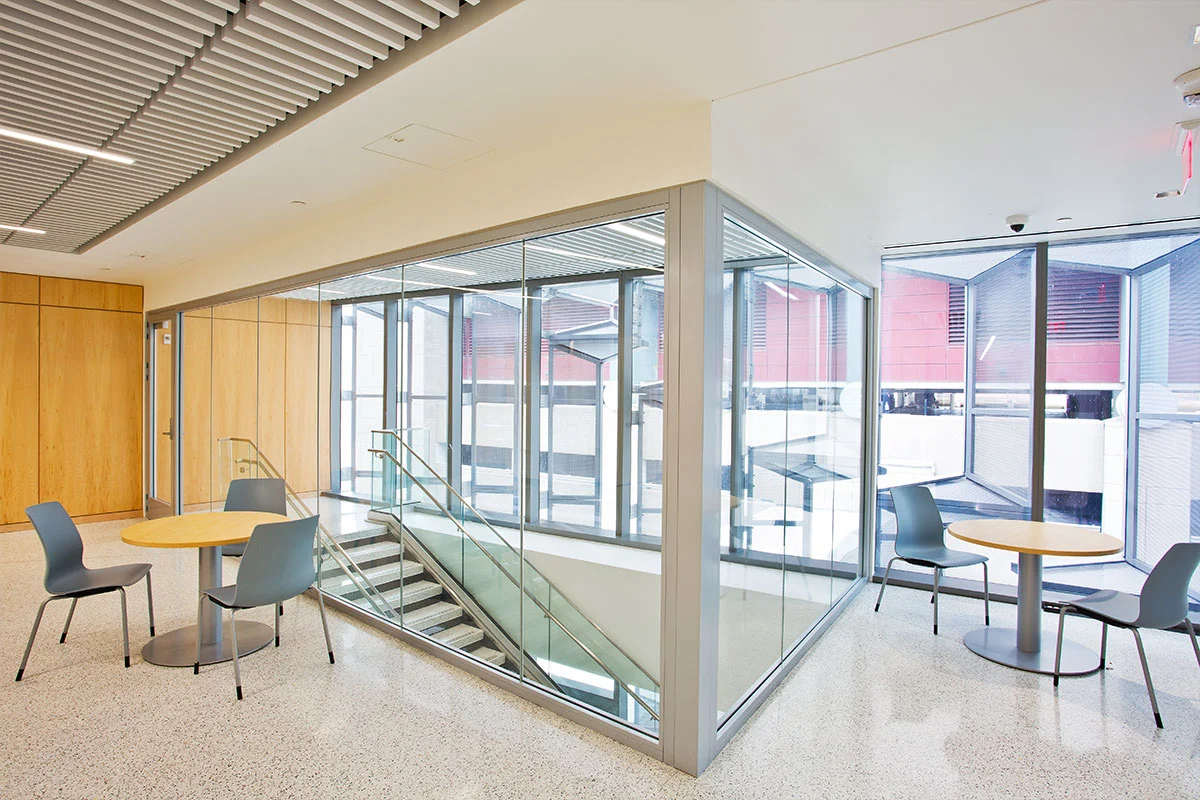Pittsburgh, PA
Architect: MCF Architecture, Payette
Product: Fireframes ClearView® System with Pilkington Pyrostop® fire-rated transparent wall panel and Fireframes® Heat Barrier Series perimeter frame; Fireframes® Heat Barrier Series fire rated doors




In spring 2023, the University of Pittsburgh opened the doors to a seven-story west wing addition to Alan Magee Scaife Hall. The medical school building features several updated lecture halls, labs and classrooms. It also includes team-based learning and small group rooms as well as an entire floor dedicated to medical students. This floor is meant for students to congregate, study and build community.
According to MCF Architecture, the design firm behind the addition, the building serves the university’s 150 medical students as both an academic building and a social hub. A monumental stairwell activates the space, aiding the social hub goals by contributing "bright, modern spaces intended for student interaction."
One of the ways the space helps to facilitate academic community is through the extensive use of transparent glazing to create an open and inviting floorplan. For the stairwell, it includes the specification of code-compliant, butt-glazed fire-rated glass assemblies. This design is a significant departure from the building’s original floorplan, which used opaque materials to meet building code requirements. While effective, this approach obstructed views and limited access to daylight.
Updating the design to include the widespread use of glass helped the project teams preserve unobstructed sightlines through the stairwell to each floor. It also preserved views out of the external glass curtain wall—all while maintaining code compliance.
Meeting building code requirements without sacrificing occupant experience
Alan Magee Scaife Hall includes features used specifically for opening the field of medical science and practice to the next generation of medical providers—from labs with augmented and virtual reality capabilities to reconfigurable classrooms equipped with giant screens and monitors. It also includes design elements meant to keep them safe while maintaining an open design.
For example, the use of butt-glazed assemblies around the central staircase allows students to scan each level. The ability of students to peer into each floor is important both to the ability of the building to act as a social hub and as a practical means to offer new students intuitive wayfinding within the space. Each of the building’s seven floors has a different color theme for the walls and accents. Because students can quickly scan them as they move up the staircase, they can readily know where they are.
The fire-rated, butt-glazed assemblies maximize visual connection since they do not have vertical mullions. Instead, they use narrow vertical butt joints to allow uninterrupted horizontal spans of glass. They also safeguard a path of egress from smoke, flames and radiant heat.
These fire-rated, butt-glazed assemblies support the open and naturally daylit feel of the lounges immediately outside the stairwell. With only a narrow-profile perimeter frame, Technical Glass Products’ (TGP) Fireframes ClearView® System maximizes the possible glazing area of the design. This allows the Pilkington Pyrostop® fire-resistant rated glass to increase daylight access, connect adjacent spaces visually and meet code requirements for fire and life safety.
Offering a cohesive design aesthetic with narrow-profile perimeter frames
Creating a cohesive look between different parts of a stairwell can be difficult. For Alan Magee Scaife Hall, the stairwell brought together several features and materials within a confined space—the butt-glazed, fire-rated glass assemblies, the handrails and the exterior glass curtain wall.
The handrail systems include butt-glazed panels with a continuous handrail. Creating symmetry between this element and the entrances to each floor, TGP’s Fireframes ClearView® System supports compartmentalization efforts without compromising design intent. Likewise, the Fireframes® Heat Barrier Series perimeter frame is finished to provide visual cohesion with the handrail.
The perimeter frame’s narrow profile also provides a close visual match to the neighboring exterior curtain wall. This quality is incredibly important as multiple systems with varying performance requirements are in proximity, which can lead to discrepancies in framing profile sizes. Improving visual compatibility between fire-rated and non-rated systems can provide a more unified and intentional aesthetic to a space. The precision roll-forming techniques used for these framing systems result in narrower fire-rated frames that help design teams achieve code requirements without having to sacrifice their intent.
Solving installation challenges before they show up
While the look of the fire-rated glazing assemblies in Alan Magee Scaife Hall realizes specific design goals, their ability to meet building conditions is crucial to achieving both fire rating requirements and ensuring an efficient installation. The building’s stairwell includes several custom corner conditions that could have proved challenging without collaboration throughout the design and installation phases—since these aspects of the application needed multiple materials and systems to work together to achieve the right dimensions and conditions.
TGP collaborated with the project design team to fabricate custom corners that met the floorplan, which was critical to both the look and performance of these fire-rated glazing assemblies. TGP provided the glazier with thorough documentation of how to install these systems as well as worked closely with multiple project stakeholders to ensure the material was phased in a way that supported an efficient and safe installation.
The ability for building professionals to work in detail with a glazing manufacturer allows the successful design and installation of larger, more complex scopes. This includes navigating challenges in the design phase. It also involves supporting installation with high-quality crating and well-planned shipping schedules.
Working as a team pushes the envelope in stairwell design
Today, Alan Magee Scaife Hall functions as both a learning and social hub. Students can come and go while seeing their peers studying or relaxing on each of the seven floors, as they work towards their degree. The fire-rated, butt-glazed assemblies that encase the central staircase support the design goal of improved visual connection.
Not only do they contribute to a more occupant-centered design by improving navigability, but they also support medical students in building community—all while maintaining fire- and life-safety code requirements with fire-rated framing and glass.
While the assemblies themselves allow code-compliance that did not compromise design intent, collaboration between designers, glaziers and the manufacturer ensured these fire-rated assemblies were fabricated to meet the specific details of the project as well as shipped and installed in a way to support a safe and efficient build.